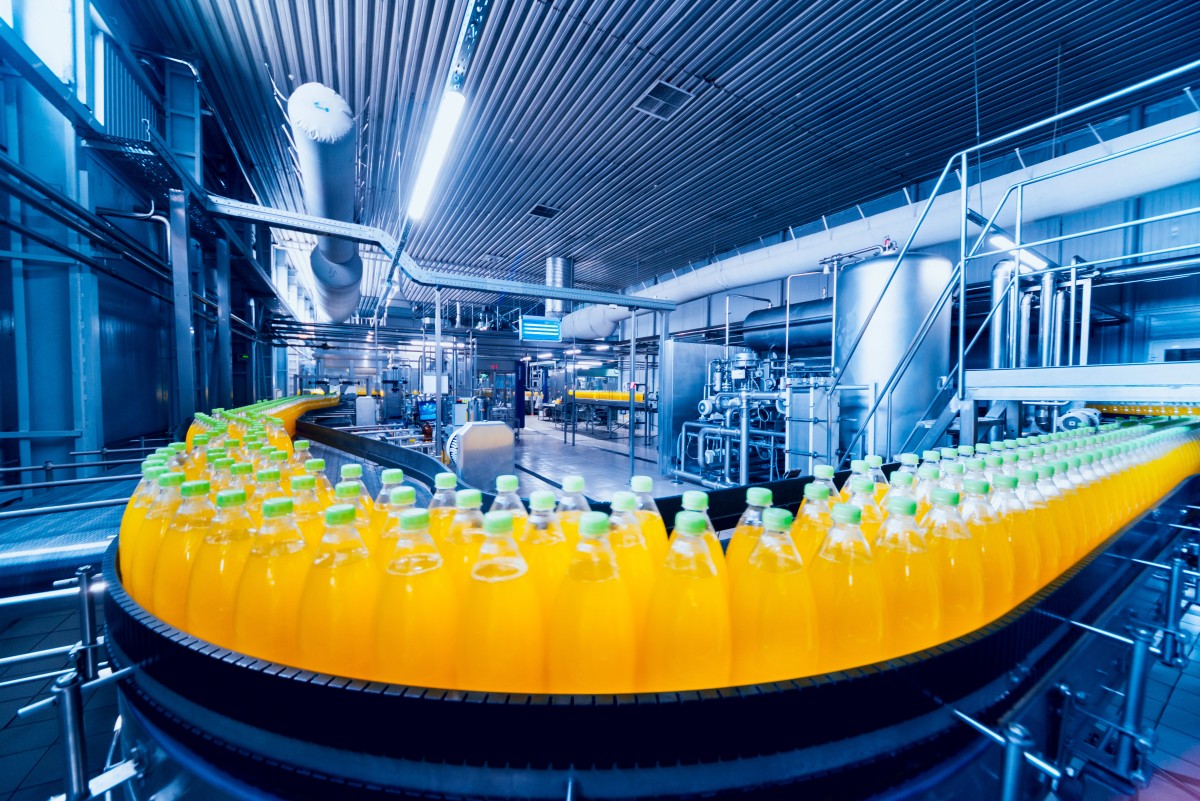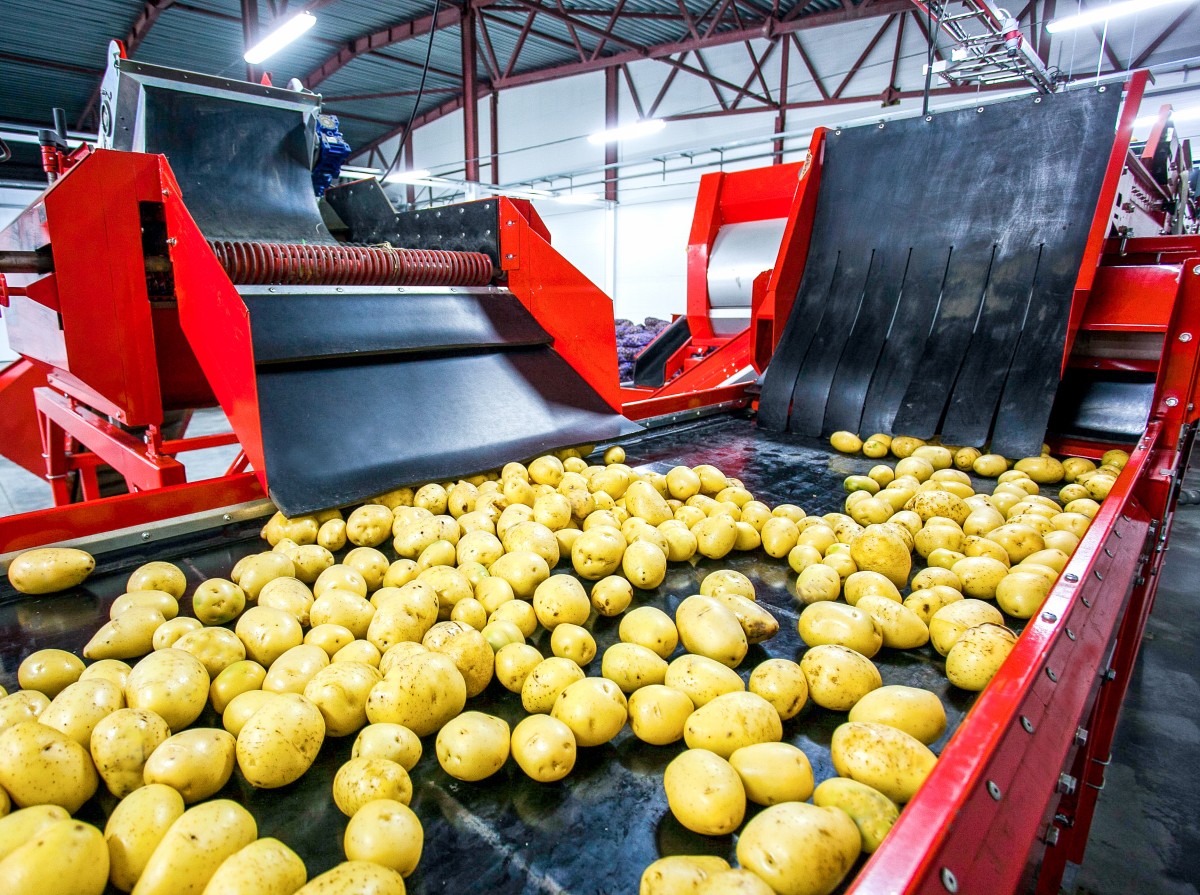February 5, 2021 | Food and Beverage
The Importance of Traceability and Material Flow in Food and Beverage Supply Chains

Among the many lessons that manufacturers have learned throughout the COVID-19 pandemic, the need for a resilient supply chain has proven to be one of the most important. This has been especially true in the food and beverage industry, where quality and safety must be emphasized.
In addition to contending with food safety and quality issues, food manufacturers are now facing the added challenge of rapid shifts in customer demand and supply disruptions. Panic shopping at the beginning of the pandemic led to stockpiling, resulting in food goods flying off store shelves. Products from bread to meat to milk were in high demand, overextending manufacturers who were trying to keep up with this significant consumer shift.
In the face of rapid shifts in customer demands, manufacturers can utilize technology and tools that allow them unprecedented supply chain transparency to be able to identify risks before an event occurs. Supply chain traceability tools allow manufacturers to 1) have visibility to potential inefficiencies, 2) maintain regulatory compliance, and 3) take steps to optimize supply chains in the face of potential disruptions.
Quick Links:
- What is Traceability in the Food and Beverage Industry?
- Why Material Flow is Essential in Food Manufacturing
- How Can Traceability Help Prevent Supply Chain Disruptions Due to Negative Impacts such as COVID-19?
What is Traceability in the Food and Beverage Industry?
Traceability in the food and beverage industry can be defined as the ability to follow the movement of products - including all ingredients - through every step of the supply chain. This involves documenting the sourcing, processing, and distribution of the products.
According to the FDA, traceability is integral to helping manufacturers and public health agencies quickly track the source of a foodborne illness outbreak or contamination event. However, it can also provide valuable insight into supply chain strengths and weaknesses. In the modern food industry, consumers want to know the source of their food. Manufacturers who implement traceability measures can achieve this transparency, as well as the assurance of food safety and quality.
Traceability also provides valuable insight into any inefficiencies or vulnerabilities in the ingredient supply chain. When the FDA conducted an investigation into supply chain traceability, they found that 59% of the manufacturing food facilities weren't maintaining accurate documentation about their food sources or their supply chains. Lack of traceability presents health risks in the case of a food emergency and is an opportunity area for more effective supply chain management practices.
Supply chain traceability allows increased visibility into the movement of products and their inputs from the start of the supply chain to end-use. With traceability tools, businesses can capture high-level information so this captured data can be used to make better-informed decisions. This increased visibility allows manufacturers to map their entire supply chain, keeping track of all of the factors that influence both the ingredient and finished product journeys as items traverse from source to consumer.
Common Traceability Tools
Traceability tools can begin providing valuable insights almost immediately. Some of the most common traceability tools are identification and marking methods that enable tracking numbers and ID tags to connect data on both the ingredients and the production history with that of the finished products.
Examples include:
Scannable Barcodes & QR Codes
Barcodes and QR codes are placed on items and are easily trackable throughout the entire supply chain. They can enable the gathering of valuable data in real-time, such as date and lot code data, location data, timestamps, and more. This data can also be aggregated for final product inventory traceability, which can help to quickly pinpoint a possible problem in the production process, determine where and why the issue could have happened, and allow the manufacturer to take steps to quarantine or recall any products with defects or contamination. It can also identify areas where the supply chain is experiencing delayed movements, whether due to external or internal factors.
Shipping Status Alerts
Shipping status alerts are becoming increasingly popular for manufacturers looking for supply chain management tools. These real-time alerts provide timely information on all shipping milestones achieved across the given product's supply chain.
Real-time updates from shipping status tools keep manufacturers - and their stakeholders - aware of the current shipping environment so actionable steps can be taken before minor issues become major. For example, shipping status updates can notify a manufacturer that shipments running through a certain location are being delayed. This notification allows the manufacturer to address the problem by using alternative sources of supply, adjusting production schedules and locations, and redistributing inventory.
Traceability tools can be used to manage supply chains in situations of rapid consumer demand, maintaining stakeholder credibility, and damage control in situations of product defects and contamination.
Scenario
Challenge: A manufacturer receives several reports from clients complaining about certain defects in a batch of products.
Solution: The manufacturer has traceability tracking tools on inventory, so they can pinpoint the problem to address it quickly. They compare production process details of all the defective products and the lot numbers of the parts to see what is in common to determine what is causing the defects and address the issues in the production process.
Result: Due to the traceability tools, the manufacturer can quickly locate the specific batch of materials with defects to contain this batch; identify the cause of the defects; and take the additional steps to correct sourcing processes, production process, and employee training to mitigate future occurrences.
Why Material Flow is Essential in Food ManufacturingMaterial flow is a supply chain management model that represents the transportation of all parts, raw materials, and finished products as a “flow,” or how work moves through a system. When materials move through the supply chain steadily and predictably, it is considered “good” material flow. “Bad” material flow is characterized by a slow process with stops and breaks along the way. Removing inefficiencies in supply chains increases material flow.
For example, the material flow of frozen French fry manufacturers would detail the journey of how, when, and where the given type of potatoes were harvested, how the potatoes traveled to the facility, and the condition of the potatoes when stored, and how and when the potatoes were processed and shipped.

One of the greatest benefits of material flow is the increased visibility into the efficiency of supply chains. With the right material flow monitoring tools, manufacturers can spot any number of vulnerabilities that may lead to potential disruptions in the future or weaknesses that may be at risk in the case of a disruptive event.
However, the majority of manufacturers unfortunately have limited insight into how their supply chains actually work. A recent survey found that over 80% of manufacturers currently experience low to moderate supply chain visibility. And, as the COVID-19 pandemic has revealed, low visibility can yield some major challenges. But, by utilizing material flow analytics and tools, manufacturers can achieve a high level of supply chain visibility, allowing them to identify and fix supply chain vulnerabilities before an issue arises.
How Can Traceability Help Prevent Supply Chain Disruptions?The COVID-19 crisis has placed an enormous amount of stress on food supply chains. Bottlenecks in farm labor and food processing developed as a result of social distancing measures and lockdown measures; and, panic stockpiling by consumers resulted in dramatic shifts in demand. Grocery store shelves were frequently empty of essential items ranging from meat to flour. And, while there wasn't necessarily a national food shortage, food manufacturers had to quickly implement new protocols to meet demands, all while protecting employees from the virus. In addition, raw materials sourced from China, where the first lockdowns occurred, were back-ordered due to shipping restrictions and limited output due to factory closures.
As long as the COVID-19 crisis continues, the possibility of more disruptions and stockpiling exists. With material flow analytics and traceability tools, manufacturers can gain the valuable data and visibility they need to make informed decisions about their supply chains and take actionable steps to strengthen any weaknesses that could occur in the event of more disruptions. This may take the form of choosing alternate sources of supply, employing alternate supply chain paths to avoid ones that are at risk for bottlenecks or delays, or tracking the speed of products as they make their way from origin to the consumer to discover how to expedite the process. Traceability tracking provides manufacturers with the agility, efficiency, and control they need to meet rapid shifts in demand, whether COVID-19 related or not.
If you’re interested in developing strategies to create agile and efficient supply chains for your food manufacturing business, then look no further than CMTC’s Supply Chain Consulting Services. Our team of experienced and knowledgeable supply chain consultants can provide a broad range of assistance required to optimize your supply chain so you can prepare the best risk management solutions. Contact us today for a free consultation to review your unique needs and help prepare your manufacturing business for success.
About the Author
Gregg Profozich
Gregg Profozich is a manufacturing, operations and technology executive who believes that manufacturing is the key creator of wealth in the economy and that a strong manufacturing sector is critical to our nation’s prosperity and security now, and for future generations. Across his 20-year plus career in manufacturing, operations and technology consulting, Mr. Profozich helped manufacturing companies from the Fortune 500 to the small, independents significantly improve their productivity and competitiveness.

